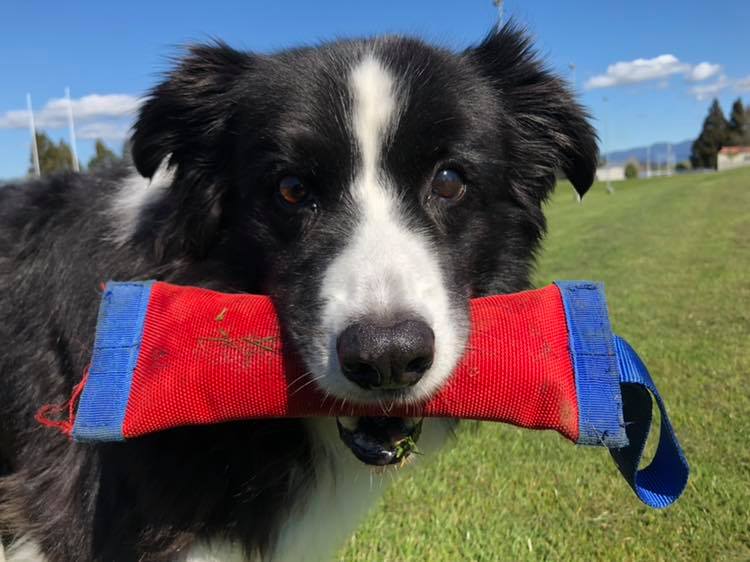|
I often ask this question to many people that own dogs. The most common reply is usually a bought dog toy from a pet shop. Including and not limited to; soft stuffed toys, squeaky toys, tug toys and ropes, kongs and treat balls, silicone or nylon bones, balls (of various types), ball on a rope and so the list goes on.
THE DEMONSTRATION So when I show people how to play with their dogs, it often surprises them that I can get them to play with pretty much anything they choose, from your car keys to your sunglasses, to even a $10 note from your wallet. I guess what I'm trying to say here is that a dog doesn't understand where you get the toys from and that you spent half your wages on an elaborate selection of the cutest, funniest or toughest toys. For them it's all about how you play with those toys. And when I say how 'you' play with those toys, I mean just that. UNDERSTANDING PLAY DRIVE Whilst many dogs will self amuse with some toys, as they all have a desire to play, it's critical to recognise that they require interactive play as well. This can be with another dog but it is much more important for future training and obedience that most play is with its owner. Now this is not as simple as you think. Often the barrier to fun play is the owner themselves. They are often too embarrassed to act silly, excitable and playful; particularly in front of someone else. So my first task is always to teach and demonstrate to the owner just what I mean and how to engage with their dog, often using the methods that 2 dogs playing together will use;
GAME RULES
There is truly an art to playing with your dog and every dog is different in character. Different approaches are necessary for different dogs to ensure you get the best play drive and focus on you. But one thing is for sure, your genuine enthusiasm to play and reward is the key. Dogs, like children, know if you're faking it and not giving them your whole attention. Take note smart phone users!
0 Comments
Your comment will be posted after it is approved.
Leave a Reply. |
AuthorsArticles created by the team at Allsorts Dog Training, Bay of Plenty, New Zealand Our Library
All
|


 RSS Feed
RSS Feed